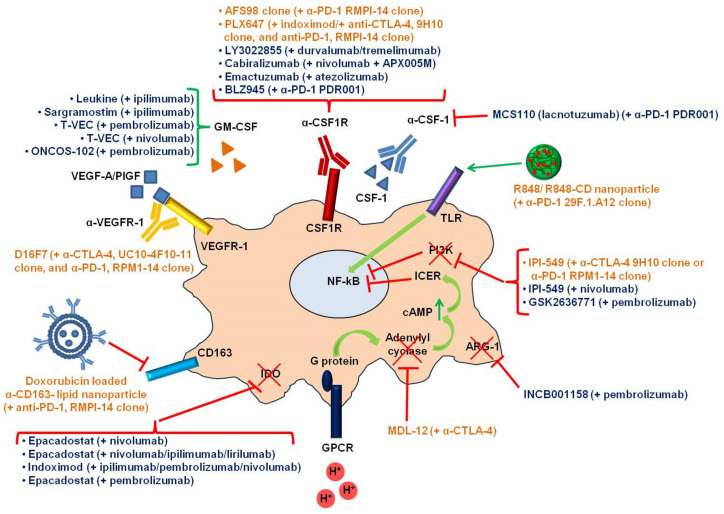Figure 3.
Recent strategies aimed at targeting TAMs in combination with ICIs for melanoma treatment. The schematic drawing illustrates agents, evaluated in preclinical studies (brown) or clinical trials (blue) for melanoma treatment, acting through agonistic (green arrows or bracket) or antagonistic (red blunted arrows or brackets) mechanisms, in combination with anti-PD-1/PDL-1 or anti-CTLA-4 mAbs. GM-CSF agonists, CSF-1 antagonists and CSF1R inhibitors hamper a signaling pathway involved in M2-TAMs recruitment and polarization. IDO and ARG-1 inhibitors counteract depletion of tryptophan and arginine reservoir, respectively, both required for T-cell activity. The adenyl cyclase is a feasible target of anti-TAMs approaches since it inhibits TLR dependent pro-inflammatory NF-kB signaling, by increasing cAMP levels and promoting ICER expression. The same signaling pathway is negatively regulated by PI3K, thus justifying the experimental use of molecules targeting PI3K-γ. Consistently, another TAMs reprogramming pharmacological approach is represented by TLR agonists. Finally, the D16F7 mAb, directed against VEGFR-1, counteracts a signaling pathway involved in M2-TAMs chemotaxis and recruitment to the TME. See text for further details.

